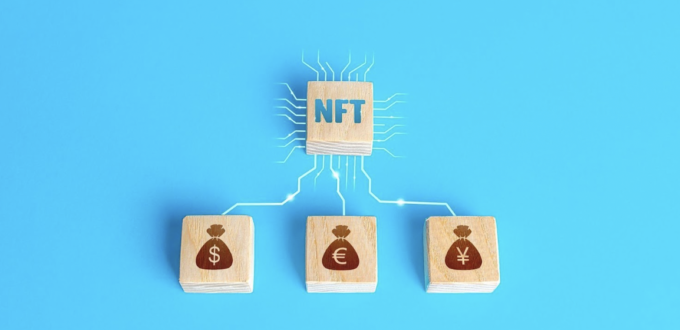Non-fungible tokens (NFTs), have seemingly taken the digital world by storm.
Last year the industry experienced a 21,000% increase in trading volume to more than $17 billion, according to a report from Nonfungible.com.
The history of NFTs goes back to 2014 but it wasn’t until 2021 that a multitude of investors, celebrities and high-profile people entered the NFT world. NFTs went viral last year possibly when former Twitter Inc. TWTR CEO Jack Dorsey sold a tweet as an NFT for $2.9 million.
While the NFT craze spread like wildfire, some people found it hard to understand what they are. This article explains five things you need to know to understand NFTs.
Non-Fungible What?
A non-fungible token is a unique digital asset that cannot be replaced by any other identical asset. NFTs are kept on the blockchain system — the same architecture supporting cryptocurrencies — with a unique and encrypted identity code that makes them different from each other.
1. What Makes NFTs Different From Cryptocurrency?
NFTs are similar to cryptocurrencies such as Bitcoin BTC/USD and Ethereum ETH/USD because they run on the same system architecture, but their similarities somewhat end there. Cryptocurrencies are fungible, meaning they can be traded or exchanged for another. They are also equal in value — one Bitcoin has the same value as another Bitcoin.
NFTs can be different while being on the same blockchain. Each separate batch of NFTs is digitally signed, making it theoretically impossible to be intrinsically equal in value to another or to be simply exchanged for another. NFTs are unique in the sense that while there can be single pieces or many copies of the same image or data, no two from different origins are the same.
2. How They Are Issued
NFTs are issued via various frameworks, the most prominent being Ethereum Request for Comments (ERC)-721. ERC is a standard for creating non-fungible assets using the Ethereum blockchain network.
Once an NFT is created it can be traded on marketplaces such as OpenSea, Rarible, NiftyGateway and BSC, which connect buyers with sellers. An NFT’s value varies depending on supply and demand.
3. Buying NFTs
To purchase NFTs, you must have Ethereum or the respective blockchain token (other less common examples include Tezos XTZ/USD and Algorand ALGO/USD in your digital wallet or via payment methods on the NFT exchange itself. You can purchase Ethereum from cryptocurrency exchange platforms such as Coinbase Global Inc. COIN. The NFTs you buy will often be kept in a digital device called a wallet.
4. Redeeming NFTs
Redeeming NFTs allows you to take ownership of an NFT from the marketplace into your wallet. Some marketplaces even mail a physical collector’s card that can be used to redeem the purchased NFT. The quick response (QR) code found on the card is scanned to redeem the NFT into the buyer’s wallet — but most of the time it is a simple digital transfer on the exchange.
Promotion of NFTs
In addition to buying NFTs on a marketplace, people also acquire NFTs by converting digital artwork into digital assets, a process called minting.
Minted artwork can be sold on popular marketplaces, but minting artwork alone is arguably not enough unless there is a strategic way to promote it. The most successful NFTs, including these, might take promotion seriously.
NFTs are often promoted and discussed on social media platforms such as Meta Platforms Inc.‘s FB Facebook and Instagram, Discord servers and on Telegram channels. For those willing to spend a bit more money, using an influencer is another way to promote NFT collections.
What Does The Future Hold?
While the momentum for NFTs has fallen recently in something of a correlation to the overall crypto market, some companies are reporting that they are still investing heavily in the sector — with OLB Group Inc. OLB as one possible example. The company recently sponsored the Museum of American Finance’s (MoAF) virtual panel on NFTs.
The company also announced that its payment platform SecurePay accepts the sale and transfer of NFTs using popular digital and cryptocurrency wallets.
This post contains sponsored advertising content. This content is for informational purposes only and is not intended to be investing advice.
Visit Benzinga’s Crypto Homepage – 1,000,000+ depend on Benzinga Crypto every month
© 2022 Benzinga.com. Benzinga does not provide investment advice. All rights reserved.

No Comments Yet